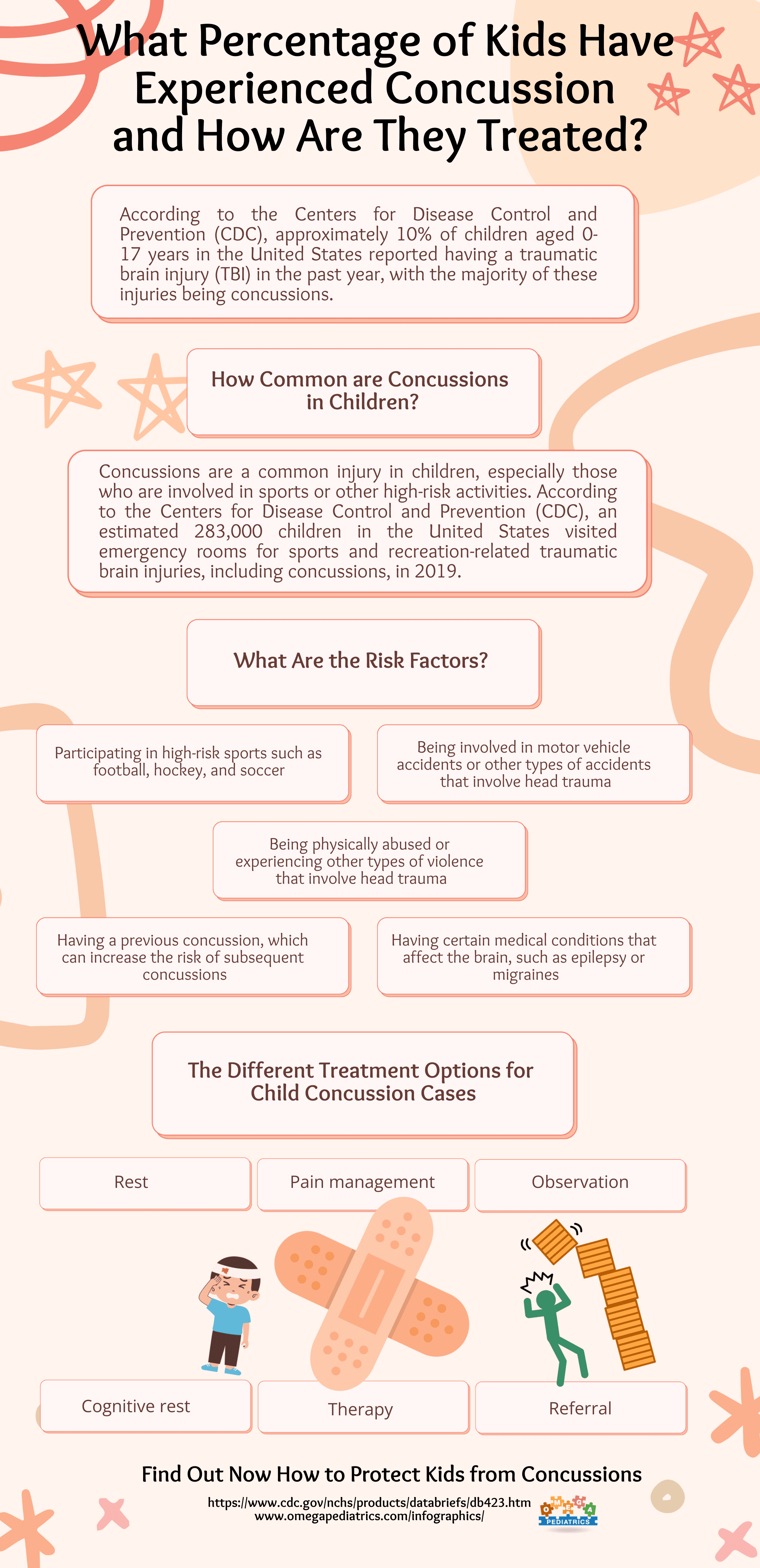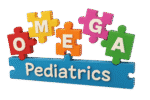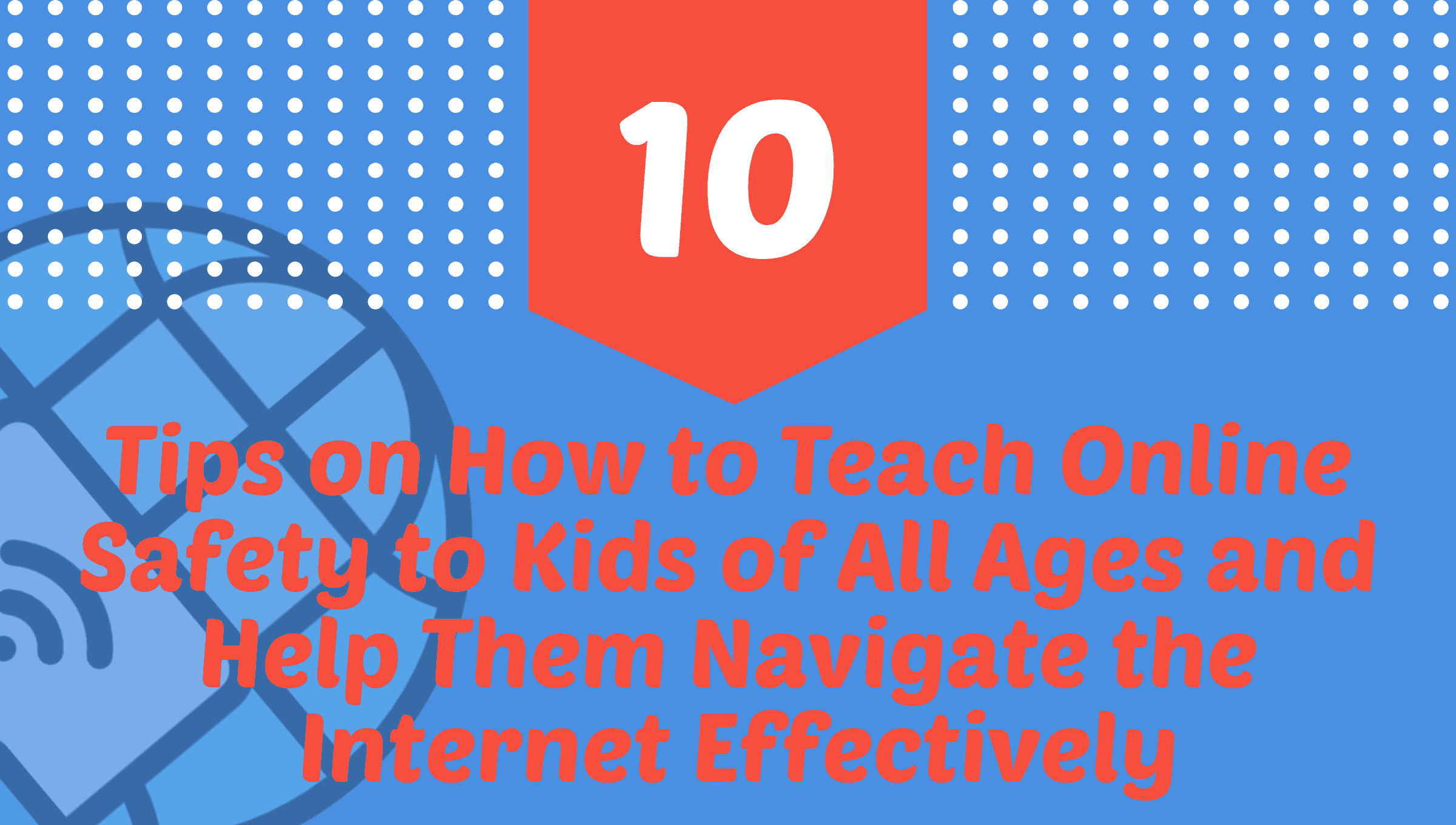According to the Centers for Disease Control and Prevention (CDC), approximately 10% of children aged 0-17 years in the United States reported having a traumatic brain injury (TBI) in the past year, with the majority of these injuries being concussions.

A concussion is a type of traumatic brain injury that occurs when the brain is shaken or jolted inside the skull, usually due to a blow to the head or a sudden, forceful movement of the head or body. Concussions are common in children, particularly those who participate in contact sports or other high-risk activities.
The symptoms of a concussion can vary depending on the severity of the injury, but they may include headache, dizziness, confusion, memory loss, sensitivity to light and noise, and changes in mood or behavior. In some cases, symptoms may not appear immediately and may develop over time.
How Common are Concussions in Children and What Are the Risk Factors?
Concussions are a common injury in children, especially those who are involved in sports or other high-risk activities. According to the Centers for Disease Control and Prevention (CDC), an estimated 283,000 children in the United States visited emergency rooms for sports and recreation-related traumatic brain injuries, including concussions, in 2019.
Some of the risk factors for concussion in children include:
- Participating in high-risk sports such as football, hockey, and soccer
- Being involved in motor vehicle accidents or other types of accidents that involve head trauma
- Being physically abused or experiencing other types of violence that involve head trauma
- Having a previous concussion, which can increase the risk of subsequent concussions
- Having certain medical conditions that affect the brain, such as epilepsy or migraines
It’s important to note that not all concussions are caused by high-risk activities. Children can also sustain concussions from falls or other accidents in their daily lives.
The Different Treatment Options for Child Concussion Cases
The treatment for a child’s concussion will depend on the severity of the injury. In general, mild to moderate concussions are managed with rest and careful monitoring. The following are different treatment options for child concussion cases:
- Rest: Physical and cognitive rest is the cornerstone of concussion treatment. The child should avoid any physical activity, sports, or activities that could lead to another injury. They should also limit their exposure to screens and other activities that require concentration.
- Pain management: Acetaminophen or ibuprofen can be used to manage pain associated with a concussion. However, aspirin should be avoided because it can increase the risk of bleeding.
- Observation: The child should be closely monitored for signs of worsening symptoms, such as headache, nausea, dizziness, or difficulty concentrating. Any changes should be reported to a healthcare provider.
- Return to activity: The child should only return to physical activity or sports when they have fully recovered. This should be done gradually, under the guidance of a healthcare provider.
- Cognitive rest: The child may need to take a break from school or other activities that require concentration until their symptoms have resolved.
- Therapy: In some cases, physical therapy or occupational therapy may be recommended to help the child recover from a concussion.
- Referral: If the concussion is severe, the child may need to be referred to a specialist for further evaluation and treatment.



